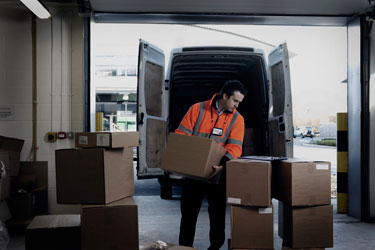
Whilst manufacturing and production environments present the most obvious risks to workers that operate alone in remote locations, the welfare of the ‘accidental’ lone worker remains a common corporate oversight. ANT Telecom’s Managing Director, Paul Smith examines the era of the Lone Danger and uncovers the silver bullet: a smart telecommunications partner.
With new UK legislation imposing fierce criminal penalties on organisations that fail to protect their employees from risk, companies are slowly recognising the need to take serious steps to protect the everyday adventures of all employees working in isolation – however brief their solo engagements may be.
The number of people in the UK classified as lone workers is growing rapidly. Some work in hazardous environments such as oil or gas refineries, others work in isolation within manufacturing plants, factories or construction sites. And outside of these, countless employees work alone in high-risk or perilous conditions at unsociable hours. However, whilst their place of work may be remote, their status as lone workers is often obvious and defined by their job specification. As such, as employers strive to meet their duty of care responsibilities in line with evolving HSE regulations, remote employees and contractors are increasingly being equipped with lone worker solutions to assure optimal communications throughout the working day. With estimates suggesting there are now more than six million lone workers in the UK, it’s reassuring to know that their safety is being supported by the effective deployment of innovative communications technologies.
 But what of the additional millions of employees that, through the course of their everyday routines, are exposed to similar periods of isolation – yet their vulnerability is disguised by a job description that does not reflect the reality? The UK workforce is full of ‘accidental’ lone workers whose jobs make them susceptible to the inherent risk of lone working by stealth – but whose employers are oblivious to the potential dangers. A company’s failure to be alerted to an emergency situation and to escalate and respond to it appropriately can have dramatic – potentially fatal – consequences.
But what of the additional millions of employees that, through the course of their everyday routines, are exposed to similar periods of isolation – yet their vulnerability is disguised by a job description that does not reflect the reality? The UK workforce is full of ‘accidental’ lone workers whose jobs make them susceptible to the inherent risk of lone working by stealth – but whose employers are oblivious to the potential dangers. A company’s failure to be alerted to an emergency situation and to escalate and respond to it appropriately can have dramatic – potentially fatal – consequences.
With the recent introduction of the Corporate Manslaughter Act, the first prosecution under which related to a lone worker, organisations know that they are ultimately responsible for the safety of all their employees – and that their ability to protect lone workers, both atypical and ‘accidental’, is imperative. The penalties for neglect are severe. The maximum punishment is imprisonment, with business owners fully accountable. The financial repercussions are similarly significant – with fines of up to 10% of turnover for companies found in breach. The human costs of a serious, but avoidable incident in the workplace are unquantifiable. Alarmed? Perhaps you should be. Literally. Or at the very least, some of your employees should.
Masked identity
So what constitutes an accidental lone worker? The answers are variable and range from those involved in the palpably perilous to the seeming trivial. For example, manufacturing environments have clearly defined locations where lone working takes place, but when visitors or site managers journey into these hazardous areas, they too become potential lone workers. Likewise the colleagues who arrive at a production site as a pair but whose activities take them to different locations. Or the boiler repairman whose apprentice leaves him alone with an angry customer whilst he visits the wholesalers for a spare part. In each case, the considerations are simple: what happens if an inadvertent lone worker suffers an accident or incident? And what systems are in place to alert colleagues and escalate a response? If the answer is ‘none’, how will anyone know that an emergency situation is unfolding and respond to it quickly and appropriately?
The scenarios are not limited to remote locations. For example, during shift work at unsociable hours a shift coordinator or duty manager may arrive on site half an hour early and leave an hour later – potentially exposing solo staff to unmonitored risk. Conversely, many businesses have staff who arrive early in the morning to beat the rush hour traffic and work alone until colleagues turn up some time later. Similarly, many field-based executives meet at head office at 8am and do not return until close of play - but unless companies have got an effective workflow management tool or constant communication, how do employers know what is happening to their field-based workforce in the intervening period? In many companies, a continued reliance on primitive paper-based records, electronic calendars or whiteboard day planners provides an inadequate and passive means of tracking employee safety.
Howdy partner
 The solutions to the problem are out there and are often simple and inexpensive. But given the widespread variability in operational environments, a one-size-fits-all approach to protecting lone workers does not exist. A sensible approach is for senior executives with responsibility for operations or health and safety to take ownership of the issue, and conduct a collaborative, risk-based audit of common workforce activity to identify needs and areas of exposure. What are the realities of your working environment? What risks are employees exposed to? If something should happen to them, how would you know? Could your business be unconsciously operating with accidental lone workers? Do you know who they are and are you doing enough to protect them?
The solutions to the problem are out there and are often simple and inexpensive. But given the widespread variability in operational environments, a one-size-fits-all approach to protecting lone workers does not exist. A sensible approach is for senior executives with responsibility for operations or health and safety to take ownership of the issue, and conduct a collaborative, risk-based audit of common workforce activity to identify needs and areas of exposure. What are the realities of your working environment? What risks are employees exposed to? If something should happen to them, how would you know? Could your business be unconsciously operating with accidental lone workers? Do you know who they are and are you doing enough to protect them?
A knee-jerk response is to look for a product-based solution to the problem. As lone working increases there is a wave of low-cost alarms and devices flooding the market. But in the era of the Lone Danger, it’s no surprise that there are cowboys out there offering cheap solutions that are neither fit for purpose nor aligned with real-world business needs. The best solutions go beyond an off-the-shelf product. Before going anywhere near procuring a solution, businesses are best advised to identify a trusted telecommunications partner that can conduct the appropriate needs analysis to customise a solution that best fits requirements.
The options are both varied and diverse, comprising tools, systems and methodologies that cover the full gamut of high, medium and low-risk environments. For example, organisations are increasingly deploying lone worker tools that align with consumers’ growing appetite for mobile technology – and building solutions that capitalise on the trend towards Bring Your Own Device (BYOD) methodologies. But BYOD is just one of a myriad opportunities to create lone worker solutions that reflect the needs of all stakeholders. It’s only through developing a full understanding of business needs that companies can identify the best-fit solution to suit budget and deliverables. It’s important to seek expert advice. The range of mobile solutions – whether smartphone, radio or DECT system – is wide, but not all lone worker tools are compatible with every mobile device operating system. Seeking the counsel of a trusted telecommunications partner can help businesses review available solutions and make an informed choice.
The benefits of optimal lone worker solutions are considerable. Beyond the obvious advantages of mitigating risk and enhancing employee safety, there are clear efficiency and productivity gains that ultimately yield returns on the bottom line. In some organisations, management has adopted a ‘buddy up’ approach to remote working to reinforce safety. This is undoubtedly expensive and can damage operational productivity. Effective lone working systems can certainly help address these inefficiencies. Moreover, a reassured and protected workforce is also a motivated one – and this, once again, can only lead to productivity gain.
However, it’s important to look at the bigger picture. Whilst companies are increasingly deploying lone worker solutions, many make the mistake of looking at the problem in isolation. This is potentially expensive and can become a catalyst for inefficiency as companies fail to optimise existing technologies. Investing in a lone worker system is not always necessary – the solution could simply be a case of making existing infrastructure work smarter. This reinforces the value of a good technology partner that can work with a business to understand their safety and efficiency requirements and design an integrated telecommunications strategy that aligns with business needs. A good partner can not only help companies work smarter, it can help them buy smarter too.
Silver bullet
And so as UK businesses face up to the reality of the Lone Danger, as well as their duty of care to employees in an increasingly regulated workforce environment, the need to equip both actual and accidental lone workers with the most appropriate systems of communication is considerable. The silver bullet is that with good advice, the right partner and a full understanding of your real-world workforce environment, businesses can enhance employee safety quickly, efficiently and cost-effectively.
Ed Says…
As one who often works alone this scenario chimes quite a few bells. My previous form as a heart attack patient six years ago should be a warning to me and for those working in more hazardous environments than my cosy home office the need to ensure a swift response to a problem is paramount.
